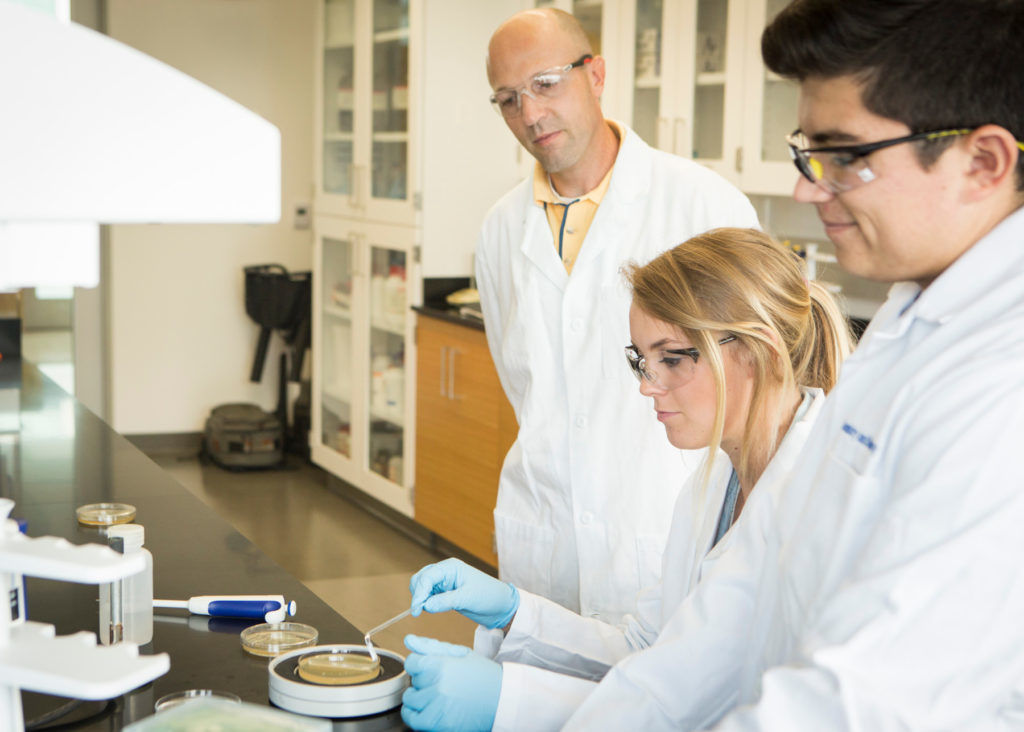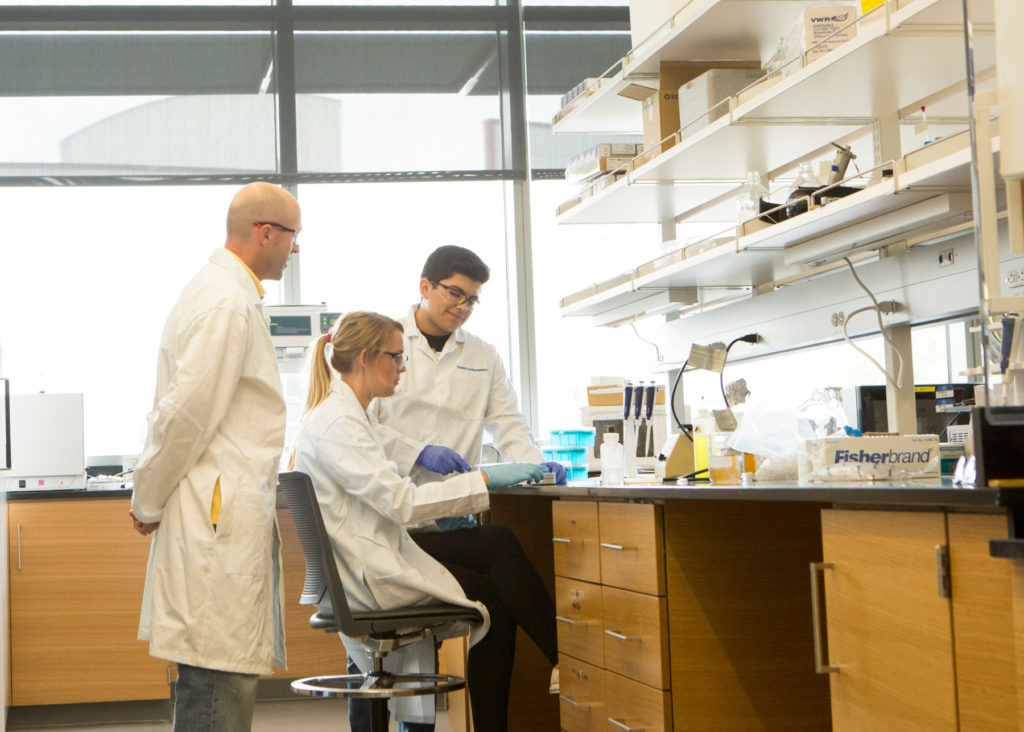
The National Institutes of Health (NIH) National Institute for Diabetes and Digestive and Kidney Diseases awarded David Moffet, Loyola Marymount University professor of chemistry and biochemistry, a three-year $407,364 grant to continue studying a protein that shows promise for slowing, if not halting altogether, the progression of type 2 diabetes.
“This new grant is a competitive renewal of a previous three-year grant,” said Moffet, principal investigator of the study. He and his students will continue studying a protein called human Islet Amyloid Polypeptide (hIAPP) and its role in type 2 diabetes. “We’re very excited about this work.”
The hormone hIAPP is normally beneficial for humans. It’s a short protein made by the same cells that express insulin in the pancreas. The problem is that if you have too much of the hormone, those proteins begin to stack on top of each other—it aggregates. It turns out that those aggregates form a toxic substance called amyloid which kills off pancreatic cells.
In the first three-year study, Moffet and his team looked at IAPP from different organisms. Each organism has a slightly different IAPP. What they found was that organisms that are known to develop diabetes (such as humans, primates, cats, and dogs) have versions of IAPP that form toxic amyloid. Organisms that are not known to develop diabetes (rats, cows, pigs and sheep) have versions of IAPP that do not form toxic amyloid.
During the course of these studies, they discovered several IAPP variants that were potent inhibitors of human IAPP toxicity.
“We mixed the animal IAPPs with the human IAPP and demonstrated that some prevent the formation of toxic amyloid in humans,” said Moffet, a protein chemist who studies how the aggregation of proteins in the human body may cause diseases such as type 2 diabetes and Alzheimer’s Disease. “Under this new grant, we will look to optimize the inhibitory peptide sequences and study their interactions with human IAPP.”
Moffet, his undergraduate students, and collaborators at Mount Saint Mary’s University, will conduct tests to discover what it is about those IAPPs that make them work and strive to enhance their effectiveness.
A provisional patent has been granted, while Moffet works on a full patent application.
“One of the things I like about this research is that all of this work is being performed by undergraduates,” said Moffet. “They’re working on something that has potential as a therapeutic drug.”
Some 30 million Americans suffer from type 2 diabetes, so this work has the possibility of making a significant contribution to the health of the nation.
Moffet notes that work on therapeutic drugs is typically done at large research universities by full time researchers. Here at LMU, four undergraduate students are working each semester on the project. They each contribute up to six hours a week and even more over the summers.
Twelve undergraduates coauthored a recently published paper from this project. His research students have also presented at conferences the team attends each year. Over the 14 years Moffet has conducted this research, more than 70 undergraduates have contributed to the study.






